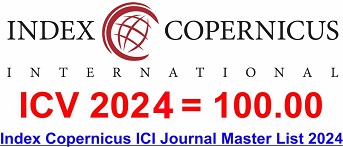Consumer Behaviour and Brand Perception in Emerging Auto Markets: The Case of Chinese Automobile Adoption in the Gulf Cooperation Council Region
DOI:
https://doi.org/10.31674/ijrtbt.2025.v09i02.005Abstract
Objective: This exploratory study examines consumer preferences and perceptions toward Chinese automobile brands in the Gulf Cooperation Council (GCC) region, focusing on the key factors influencing purchase intention. Methods: Data were collected through an online survey distributed across six GCC countries, resulting in 227 valid responses. The survey assessed consumer attitudes toward value for money, design, technology, and after-sales service. Results: The results highlight that perceived affordability, innovative features, appealing design, and reliable after-sales support are the primary drivers of positive consumer attitudes. The analysis reveals that practical considerations substantially influence consumer preference more than demographic factors such as age, with older consumers showing notable openness to Chinese brands. Conclusion: The study offers preliminary insights into the shifting dynamics of the GCC automotive market. It underscores the importance of functional value and brand perception over traditional demographic assumptions, providing strategic implications for marketers, dealerships, and automotive researchers aiming to position Chinese brands competitively in the region.
Keywords:
Chinese Automobiles, Gulf Cooperation Council (GCC), Consumer Behaviour, Brand Perception, Digital Marketing, Value-For-MoneyDownloads
References
Ajzen, I. (1991). The theory of planned behavior. Organizational Behavior and Human Decision Processes, 50(2), 179-211. https://doi.org/10.1016/0749-5978(91)90020-T
Alzahrani, S. G., & Copeland, L. (2017). The Need for Uniqueness among Gulf Cooperation Council Countries¡¯ Consumers: A Cross-Culture Study. International Journal of Marketing Studies, 9(4), 29-37. https://doi.org/10.5539/ijms.v9n4p29
bne Gulf bureau. (2024). Chinese cars are flooding the Gulf Arabian auto markets. Retrieved from: https://www.intellinews.com/chinese-cars-are-flooding-the-gulf-arabian-auto-markets-324750/ Accessed on, 5th April 2024.
Chaffey, D., & Ellis-Chadwick, F. (2019). Digital Marketing. Pearson UK.
Creswell, J. W., & Creswell, J. D. (2017). Research design: Qualitative, quantitative, and mixed methods approaches. Sage publications. Retrieved from: https://spada.uns.ac.id/pluginfile.php/510378/mod_resource/content/1/creswell.pdf, Accessed on, 18th July, 2024.
Huang, Y., Qian, L., Tyfield, D., & Soopramanien, D. (2021). On the heterogeneity in consumer preferences for electric vehicles across generations and cities in China. Technological Forecasting and Social Change, 167. https://doi.org/10.1016/j.techfore.2021.120687
Ibrahim, M. A. S. (2025). The Impact of Influencer Attributes on Purchase Intention: Evidence from Influencers’ Virtual Boutiques in Qatar. Journal of Business and Management Studies, 7(3), 29-40. https://doi.org/10.32996/jbms.2025.7.3.4
Ken Research. (2024.). GCC New and Used Car Market Outlook to 2028. Retrieved from https://www.kenresearch.com/industry-reports/gcc-new-and-used-car-market, Accessed on, 12th April, 2024.
Kithandi, C. K., Ibrahim, K., & Ondabu, I. T. (2024). Economic factors affecting consumer purchasing decisions in the Kenya motor industry. Journal of Economics and Sustainable Development, 15(2), 19–37. https://doi.org/10.7176/JESD/15-2-03
Mankiw, N. G., & Taylor, M. P. (2020). Economics. Cengage Learning EMEA. Retrieved from: https://dokumen.pub/economics-fifthnbsped-9781473768543-1473768543.html, Accessed on 4th August, 2024.
Miladi, N., Messaoud, M. B., Alkhateeb, G., Ashour, A., Al-Mohannadi, H., Fetais, A., ... & Alabidi, F. (2022). Digital youth in Qatar: Negotiating culture and national identity through social media networks. Journal of Arab & Muslim Media Research, 15(2), 151-177. https://doi.org/10.1386/jammr_00045_1
Nunnally, J. C., & Bernstein, I. H. (1994). Psychometric Theory (3rd ed.). New York: McGraw- Hill. https://doi.org/10.1177/014662169501900308
Rao, A. R., & Monroe, K. B. (1989). The effect of price, brand name, and store name on buyers’ perceptions of product quality: An integrative review. Journal of Marketing Research, 26(3), 351- 357. https://doi.org/10.1177/002224378902600309
Semenda, O., Sokolova, Y., Korovina, O., Bratko, O., & Polishchuk, I. (2024). Using social media analysis to improve E-commerce marketing strategies. International Review of Management and Marketing, 14(4), 61-71. https://doi.org/10.32479/irmm.16196
Sheth, J. N., Newman, B. I., & Gross, B. L. (1991). Why we buy what we buy: A theory of consumption values. Journal of Business Research, 22(2), 159-170. https://doi.org/10.1016/0148- 2963(91)90050-8
Singh, B. (2021). Toyota tops YouGov's 2021 Automotive Rankings in Saudi Arabia. Retrieved from https://business.yougov.com/content/34719-toyota-tops-yougovs-2021-automotive- rankings-saudi, Accessed on 19th May, 2024.
Spears, N., & Singh, S. N. (2004). Measuring attitude toward the brand and purchase intentions. Journal of Current Issues & Research in Advertising, 26(2), 53-66. https://doi.org/10.1080/10641734.2004.10505164
Statista. (2025). Mobile internet usage in UAE - statistics & facts. Retrieved from https://www.statista.com/topics/11137/mobile-internet-usage-in-uae/, Accessed on 15th September 2024.
Steenkamp, J. B. E. (2020). Global brand building and management in the digital age. Journal of International Marketing, 28(1), 13-27. https://doi.org/10.1177/1069031X19894946
Sweeney, J. C., & Soutar, G. N. (2001). Consumer perceived value: The development of a multiple item scale. Journal of Retailing, 77(2), 203-220. https://doi.org/10.1016/S0022-4359(01)00041-0
Tahir, A. H., Adnan, M., & Saeed, Z. (2024). The impact of brand image on customer satisfaction and brand loyalty: A systematic literature review. Heliyon. 10(16). https://doi.org/10.1016/j.heliyon.2024.e36254
Varian, H. R. (2014). Intermediate Microeconomics with Calculus: A Modern Approach. WW norton & company. Retrieved from: https://zalamsyah.staff.unja.ac.id/wp- content/uploads/sites/286/2019/11/1-Intermediate-Microeconomics-with-Calculus-A-Modern- Approach-Varian.pdf, Accessed on 5th December 2024.
Yoo, B., & Donthu, N. (2001). Developing and validating a multidimensional consumer-based brand equity scale. Journal of Business Research, 52(1), 1-14. https://doi.org/10.1016/S0148- 2963(99)00098-3
Zhou, R., Tang, D., Da, D., Chen, W., Kong, L., & Boamah, V. (2022). Research on China’s manufacturing industry moving towards the middle and high-end of the GVC driven by digital economy. Sustainability, 14(13), 7717. https://doi.org/10.3390/su14137717
Ziye, W. (2024). Cheaper Chinese cars gain market share from Japanese, South Korean rivals in Middle East. Yicai Global. Retrieved from:https://www.yicaiglobal.com/news/cheaper-chinese- cars-gain-market-share-from-japanese-south-korean-rivals-in-middle-east, Accessed on 14th August, 2024.
Published
How to Cite
Issue
Section
License
Copyright (c) 2025 International Journal on Recent Trends in Business and Tourism (IJRTBT)

This work is licensed under a Creative Commons Attribution-NonCommercial-NoDerivatives 4.0 International License.



























